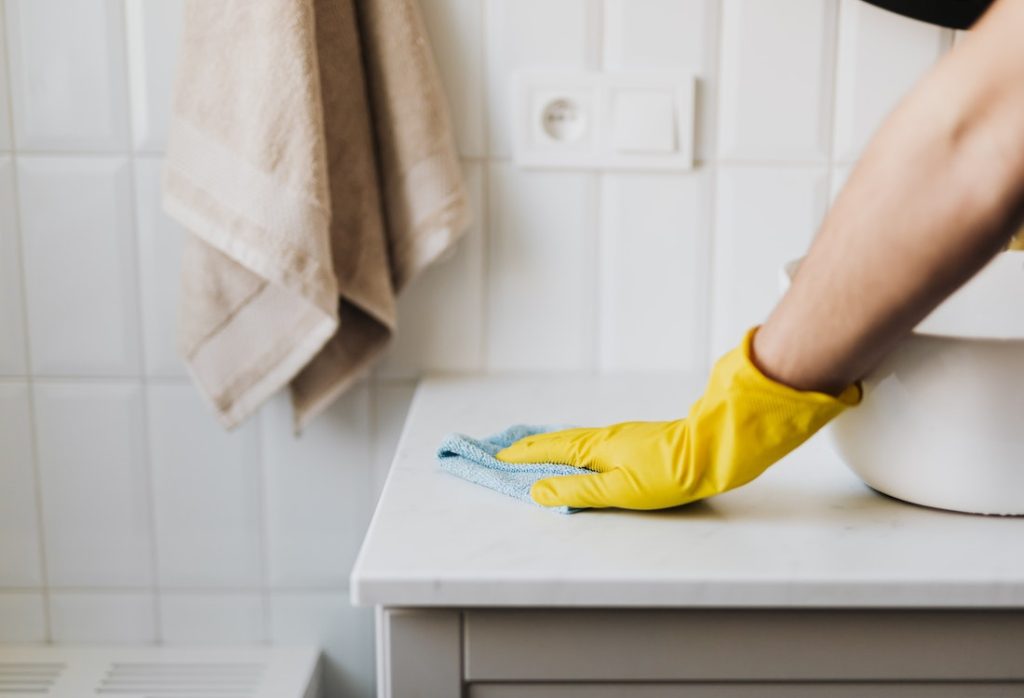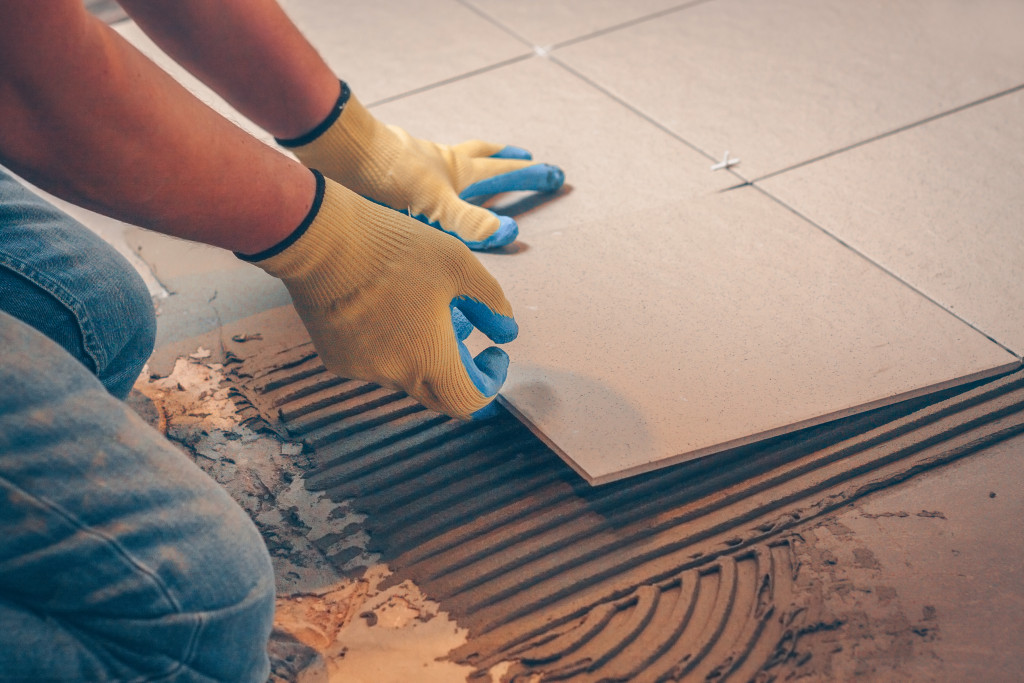A comfortable home is like a peaceful sanctuary where you can relax and feel safe. You take good care of it, but sometimes unexpected guests show up. One of those unwelcome visitors is the termite – a real troublemaker that can cause havoc in homes. It’s mind-boggling that around 600,000 homes are attacked by these sneaky destroyers, wreaking havoc wherever they go.
This part is where a home termite inspection comes in—an essential practice that shields against this relentless threat. This article explores the significance of termite inspections, revealing when and why these proactive measures are crucial. By getting a grasp on termite inspection, you’re arming yourself to protect your home from the relentless forces of nature.
How can a termite inspection save you from costly damages?

A termite inspection is a watchful protector, saving homeowners from costly burdens. Silent and sneaky termites can cause severe damage that often goes unnoticed until it’s too late. Regular inspections enable professionals to detect early signs of infestation, stopping these wood-devouring insects from compromising the structural integrity of your home.
Early detection allows homeowners to act quickly and effectively, stopping potentially costly repairs in their tracks. Did you know that termite-related damages cost billions of dollars each year? That’s why a routine inspection is a wise investment that could save you thousands.
Experts will thoroughly assess every nook and cranny of your property, even the ones often overlooked, and provide tailored solutions to address any vulnerabilities. By getting a timely termite inspection, you can ensure that your home remains a fortress against these hungry invaders, saving you from the hefty expenses that negligence could bring.
How to recognize termite damage in different areas of your home?
Recognizing termite damage in different areas of your home is essential so you can address it early on. Look at wooden structures for signs like hollowed or sagging wood, peeling paint, or maze-like patterns on surfaces. Also, watch for mud tubes or tunnels along walls and foundations in basements or crawl spaces. Indoors, check windowsills, door frames, and wooden furniture for blistered or darkened wood. Don’t forget to inspect your garden, too – look for hollowed trunks, drooping branches, or even termite swarms.
Walls might show signs like buckling or paint that looks off, and ceilings could be sagging. For attics, keep an eye out for damaged insulation or wood. When you tap on wood surfaces, listen for hollow sounds. It’s a good idea to regularly check these areas and get professional help if you think there might be termites. Catching them early is the best way to protect your home from severe damage.
Is DIY termite inspection possible? Tips for a preliminary check
Doing a DIY termite inspection can give homeowners the power to protect their property proactively. While professional help is crucial, preliminary checks can help spot possible problems and take action promptly.
Tools and equipment needed for a DIY inspection
For a preliminary termite inspection, gather a flashlight, screwdriver, probe, protective gloves, and a magnifying glass. These essential tools allow you to closely examine vulnerable areas for signs of termite activity, such as mud tubes, damaged wood, or discarded wings. You can find these items at any hardware store.
Step-by-step guide for inspecting common termite-prone areas
- Exterior Assessment: Inspect the foundation, particularly near soil and wood contacts. Look for mud tubes and wood damage.
- Wooden Structures: Thoroughly examine wooden structures, tapping them to listen for hollow sounds and probing for soft spots.
- Interior Inspection: Check windowsills, door frames, and baseboards for any visible damage or signs of termites.
- Attic and Crawl Spaces: Inspect rafters, beams, and insulation for irregularities or discarded wings.
- Garden and Trees: Examine trees for damaged or hollowed trunks and signs of termite swarms.
When should you hire a professional for termite inspection?
When dealing with potential termite problems or getting a thorough assessment, hiring a professional for a termite inspection is crucial. Experts suggest scheduling a professional inspection every year, especially if you live in an area prone to termites. And if you notice any signs of termite activity like mud tubes, hollow-sounding wood, or discarded wings, don’t hesitate to contact a professional for help.
Another time to call an expert is when purchasing a home. A comprehensive termite inspection is crucial to avoid acquiring hidden problems. Additionally, involving a termite professional can help prevent future issues if you’re planning renovations or construction. These experts have the experience, tools, and knowledge to accurately identify termite presence, assess damage, and develop effective treatment strategies. By doing so, they protect your property and give you peace of mind against these destructive pests.
What happens during a termite inspection?
A termite inspection is a thorough process carried out by trained professionals to check for termite activity on a property. They carefully examine both the inside and outside areas, looking for signs of infestation and any weaknesses that could be exploited.
During inspection, the expert will carefully examine different key areas. They’ll take a close look at the foundation, exterior walls, and crawl spaces for mud tubes that termites use for shelter and transportation. For wooden structures like window frames, door frames, and decks, they’ll check for hollow sounds, blistered paint, and visible damage.
Inside, the inspector will assess baseboards, ceilings, and attics for any signs of termite activity, such as discarded wings and termite droppings (also known as frass). They might even use specialized tools like moisture meters and infrared cameras to uncover hidden termite activity.
Furthermore, the landscape, including trees and bushes, is inspected for signs of termite colonies or swarms. The inspector will document their findings, noting any areas of concern or potential risks.
After the inspection, the professional will provide a detailed report outlining their observations and recommendations. They will discuss treatment options tailored to the specific infestation and property conditions if termite activity is confirmed.
How often should termite inspections be conducted?
Getting termite inspections done annually is smart, especially if you live in termite-prone areas. These regular check-ups help catch any early signs of infestation, which can prevent significant damage down the line. The frequency of inspections may vary depending on factors like climate, property age, and local termite activity.
On average, a termite inspection takes about 1 to 2 hours, depending on the size and complexity of the property. It’s a relatively short investment of time that can save you from significant financial and structural issues.
What is the cost of a termite inspection?
The price of a termite inspection can vary based on factors like the property’s size, location, and level of inspection needed. On average, a standard termite inspection can range from $75 to $150. However, the cost may be higher if more extensive evaluations, specialized equipment, or additional services are needed. Considering the potential damage termites can cause, the expense of an inspection is a wise investment to ensure the early detection and prevention of costly infestations.
How can you prevent termite infestation in your home?
Safeguarding your home from the relentless threat of termite infestation requires proactive measures and vigilant maintenance. Adopting preventive strategies can create an inhospitable environment for these destructive pests.
Tips for termite prevention
- Remove Moisture Sources: Address leaks and ensure proper drainage to eliminate moisture, which termites thrive on.
- Wood Maintenance: Regularly inspect and seal cracks in wooden structures, and keep firewood and lumber away from your home’s foundation.
- Landscaping Practices: Maintain a clear gap between soil and wood, trim vegetation near your home, and ensure adequate ventilation in crawl spaces.
- Termite-Resistant Materials: Use termite-resistant or treated wood when constructing or renovating.
Steps to protect your home from future termite problems

- Regular Inspections: Schedule annual professional termite inspections to detect early signs of infestation.
- Pre-Treatment: Consider pre-treating soil before construction with termiticides for long-lasting protection.
- Chemical Barriers: Install chemical barriers around your home’s perimeter to deter termite entry.
- Bait Stations: Place termite bait stations strategically to intercept and eliminate colonies.
Choosing the Right Termite Inspection Company: What to Consider
Choosing a trustworthy termite inspection company is crucial to keep your property safe from potential infestations. By carefully considering key factors, you can make an informed decision for effective termite protection.
Qualifications and certifications of termite inspectors
When assessing an inspection company, ask about the capabilities and certifications of its inspectors. Seek licensed professionals, relevant training, and memberships in recognized pest control associations. These credentials demonstrate expertise and adherence to industry standards, ensuring comprehensive and dependable inspections.
Reputation and reviews of inspection companies
To assess the reputation of potential companies, check online reviews and seek recommendations. Positive reviews and testimonials from satisfied clients indicate reliable and high-quality service. Conversely, if there are multiple negative reviews, it may be a cause for concern. Evaluating a company’s standing in the industry helps you determine its reliability and effectiveness in detecting and preventing termites.
Prioritizing Termite Inspections for Home Maintenance
Making regular termite inspections a part of your home maintenance routine is a wise investment that pays off. Putting these inspections first strengthens your property’s defenses against pesky termites, keeping it safe and valuable in the long run. Quick identification and targeted treatment of any issues ensure a secure and comfortable living space, giving you peace of mind and preserving your home for years.
Frequently Asked Questions
How do you check for termites?

Inspect termites by examining wood for hollow sounds, mud tubes, or frass. Regular professional inspections enhance detection and prevention.
Where do termites come from?
Termites come from the soil, typically entering through cracks or wood-soil contacts. They can infest structures through underground tunnels, seeking cellulose-rich materials to feed on.
What kills termites instantly?
Liquid termiticides, applied by professionals, can kill termites on contact. However, complete colony elimination requires targeted treatment over time.
How long do termites live?
Worker termites live for around 1-2 years. Soldier termites have similar lifespans. Queen termites can live decades, producing eggs throughout their lives.
How do I permanently control termites?
Permanently controlling termites involves professional help. Regular inspections, effective termiticides, and preventive measures like moisture control and sealing cracks can help ensure long-term protection against infestations.


